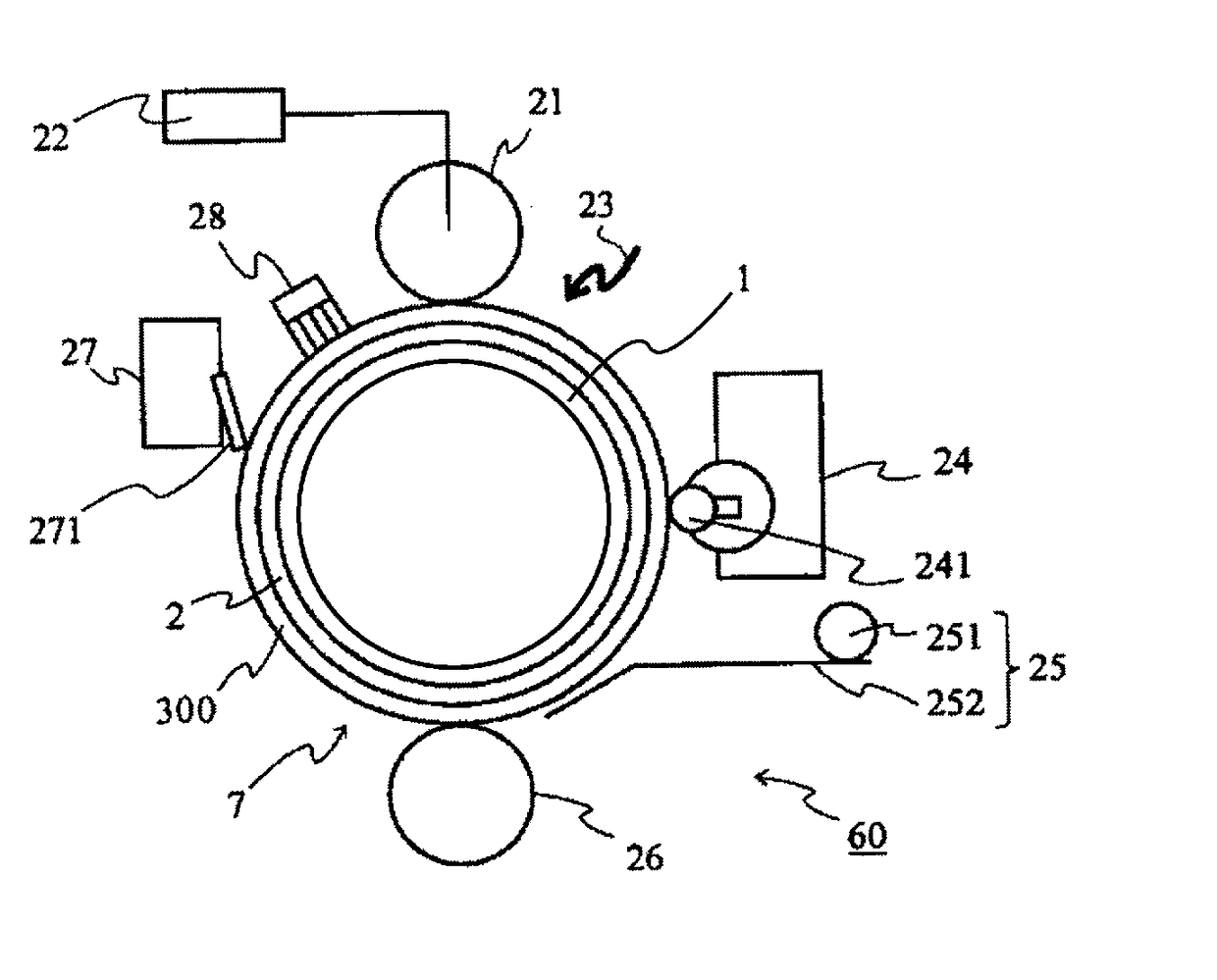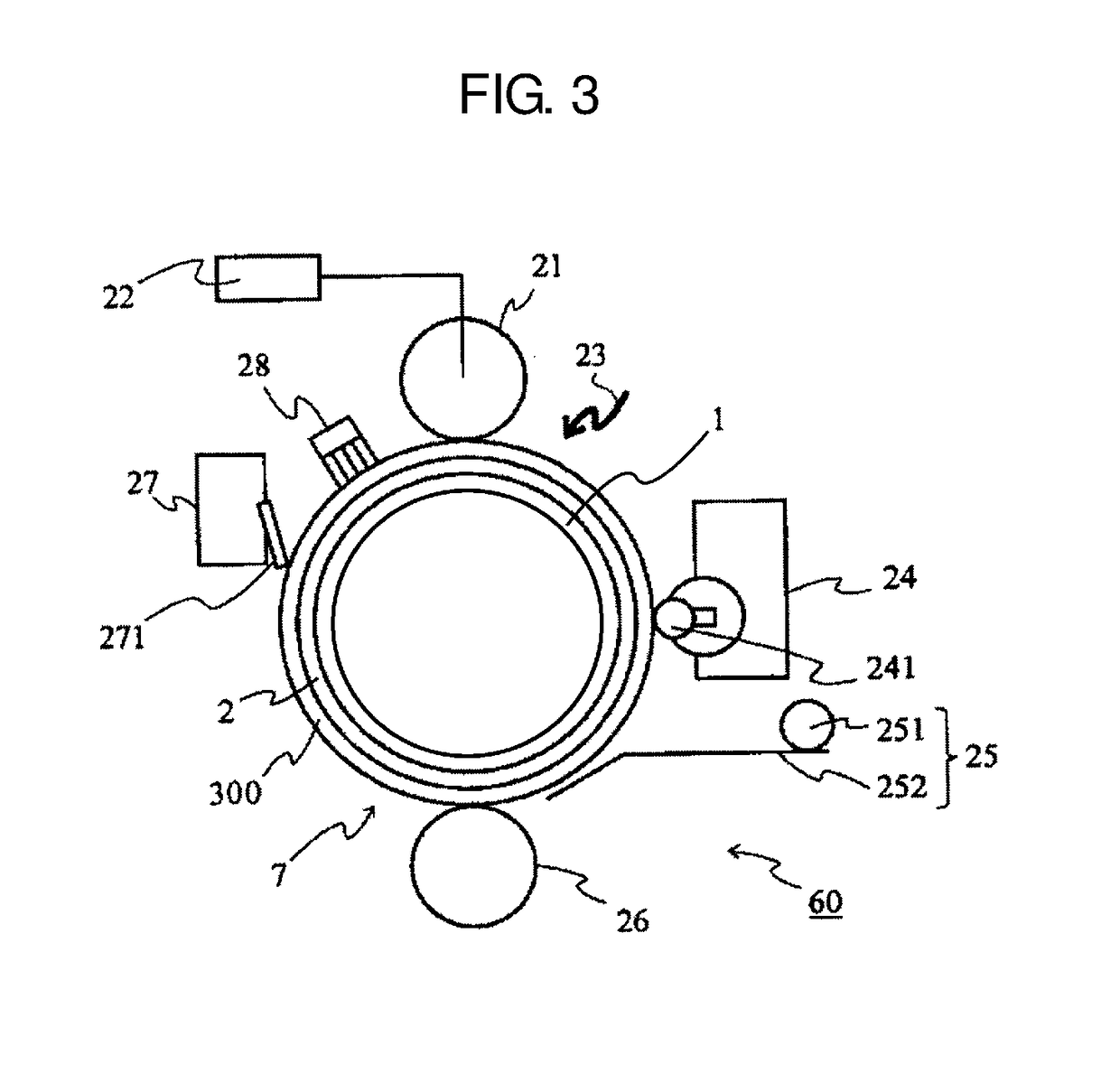Photosensitive body for electrophotography, method for producing same and electrophotographic apparatus
a photosensitive body and electrophotography technology, applied in the direction of optics, coatings, instruments, etc., can solve the problems of reducing the content of binder resin, affecting durability, and single-layer photoreceptors having limitations in achieving high performance in both sensitivity and speed, and reducing print density. , the effect of stabilizing the print density
- Summary
- Abstract
- Description
- Claims
- Application Information
AI Technical Summary
Benefits of technology
Problems solved by technology
Method used
Image
Examples
example 1
[0058]As a conductive substrate, a 0.75 mm-thick aluminum tube machined to have a size of φ30 mm×252.6 mm (length) and a surface roughness (Rmax) of 0.2 μm was used.
[0059]Charge Transport Layer
[0060]After dissolving 100 parts by mass of a compound represented by Formula (H-5) below as a hole transporting material and 100 parts by mass of a polycarbonate resin (viscosity-average molecular weight: 50,000) represented by Formula (BD-1) below as a resin binder in 800 parts by mass of tetrahydrofuran, 0.1 parts by mass of a silicone oil (KP-340, manufactured by Shin-Etsu Polymer Co., Ltd.) was added to prepare a coating solution. This coating solution was coated on the above-described conductive substrate, and the resultant was dried at 100° C. for 30 minutes, whereby a 15 μm-thick charge transport layer was formed.
[0061]Charge Generation Layer
[0062]After dissolving 7.0 parts by mass of the compound represented by the Formula (H-5) as a hole transporting material, 3 parts by mass of a co...
example 2
[0063]An electrophotographic photoreceptor was produced in the same manner as in Example 1, except that the compound represented by the Formula (H-5) that was used in Example 1 was changed to the compound represented by the Formula (H-1).
example 3
[0064]An electrophotographic photoreceptor was produced in the same manner as in Example 1, except that the compound represented by the Formula (H-5) that was used in Example 1 was changed to the compound represented by the Formula (H-20).
PUM
| Property | Measurement | Unit |
|---|---|---|
| 2θ | aaaaa | aaaaa |
| thickness | aaaaa | aaaaa |
| thickness | aaaaa | aaaaa |
Abstract
Description
Claims
Application Information
 Login to View More
Login to View More - R&D
- Intellectual Property
- Life Sciences
- Materials
- Tech Scout
- Unparalleled Data Quality
- Higher Quality Content
- 60% Fewer Hallucinations
Browse by: Latest US Patents, China's latest patents, Technical Efficacy Thesaurus, Application Domain, Technology Topic, Popular Technical Reports.
© 2025 PatSnap. All rights reserved.Legal|Privacy policy|Modern Slavery Act Transparency Statement|Sitemap|About US| Contact US: help@patsnap.com



